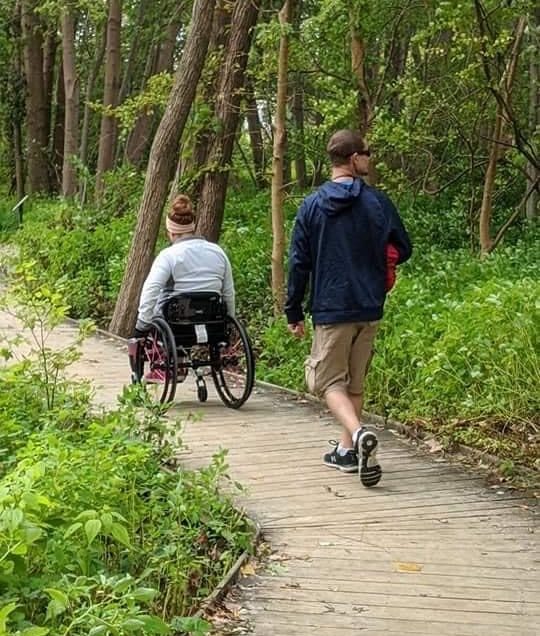By Kim Anderson, PhD
Living with a spinal cord injury (SCI) is a challenge, no doubt about it. Just taking care of your daily needs can consume a lot of energy, much less thinking about adding on any other activities. But it is important to engage in physical activity for your health.
Why by active? Physical activity can have a lot of benefits, including:
- help slow down weight gain, maintain weight, or even lose weight
- help your breathing and endurance,
- help prevent the development of diabetes and heart disease,
- reduce pain and spasticity,
- help make it easier for you to do things like transfers, self-care, and other mobility functions
- improve your mood

What is physical activity? Physical activity is ‘any bodily movement produced by skeletal muscles requiring energy expenditure’. What is the difference between physical activity and exercise? Exercise is ‘planned, structured, and repetitive physical activity that is performed to improve or maintain fitness. What that means is that exercise is a form of physical activity, but it is not the only option.
Types of physical activity:
- Everyday activities – go for a walk or roll around your neighborhood or at the mall, try to do some household activities like vacuuming or gardening, play with your kids or pets, try some elastic resistance bands while watching TV
- Accessible activities – try wheelchair aerobics, workout with a handcycle or arm bike, do upper body exercises while in a standing frame, play recreational sports like wheelchair tennis or basketball or sled hockey, try out adaptive kayaking, go for a longer roll or walk on the accessible trails at one of the Metro Parks, lift weights (if you don’t have any, try using cans, bottles, or other things around your house), practice yoga
- Adapted sports – if you like to compete you can find many adapted sports options; some need specialized equipment some do not, some you can do solo some with a team
How much physical activity is enough? There is actually scientific evidence supporting recommendations for people living with SCI.
Start out slow and build your way up. Try to include your family and friends and try different activities to keep it fun. How can you make it easy for yourself to ‘stick with it’? Set achievable goals, create and action plan, and monitor your progress.
Be aware of overdoing it when being physically active, listen to your body. Some of the things to watch for are shoulder pain or overuse of certain muscles, skin breakdown, autonomic dysreflexia, or overheating.
Resources:
- Evidence-based scientific exercise guidelines for adults with spinal cord injury: an update and a new guideline. Ginis et al., 2018. Spinal Cord 56,308-321. https://rdcu.be/cMi1E
- https://sciguidelines.ubc.ca/
- https://adaptivesportsohio.org/
- https://www.themiamiproject.org/participant/healthy-lifestyle/
- https://www.clevelandmetroparks.com/
- https://www.lakemetroparks.com/
- https://www.summitmetroparks.org/
- https://www.loraincountymetroparks.com/

